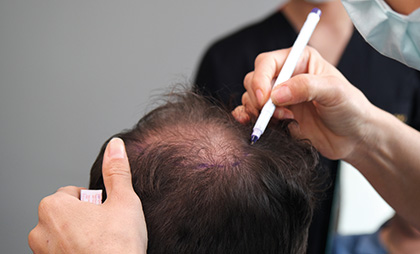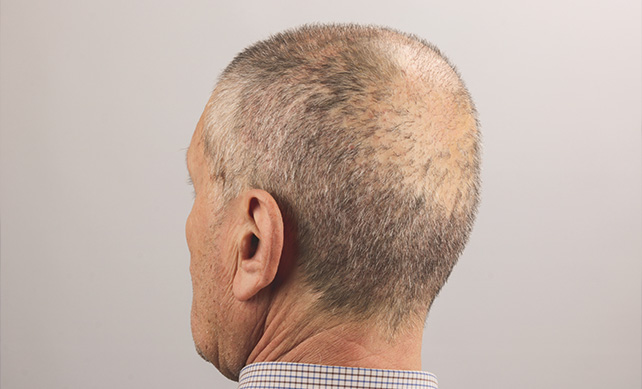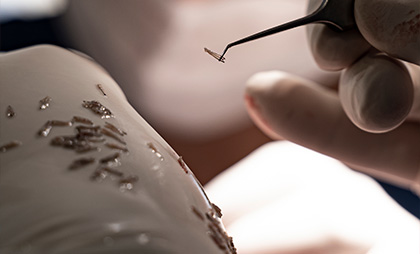What Is A Sapphire FUE Hair Transplant
The Sapphire FUE technique has emerged as the preferred method for hair transplantation due to its numerous benefits. With a success rate reaching up to 99%, it excels in maintaining tissue integrity and minimizing post-transplantation infections. Particularly suitable for men’s hair restoration, as well as beard and chin transplants, it involves the meticulous extraction of individual hair follicles using a scalpel made of sapphire stone.
Selecting the right physician and medical center is paramount in ensuring a positive experience and optimal results. A well-chosen practitioner and facility can deliver outstanding outcomes, while a poor choice can lead to significant complications, given the delicate nature of hair transplantation as a cosmetic procedure.




Candidates For Sapphire FUE Hair Transplant
Hair loss is a prevalent issue affecting both men and women, stemming from various factors such as genetics, hormonal fluctuations, certain medications, and hair care practices. Stress and psychological factors also play significant roles. Suitable candidates for hair transplantation include individuals:
- Experiencing significant hair loss, regardless of gender.
- Aged 25 or older.
- Men experiencing substantial beard hair loss.
- Maintaining good overall health.
- Possessing a donor area with sufficient hair quality and density.
Pre-Procedure Instructions For Sapphire FUE Hair Transplant
During the consultation between the patient and the medical consultant, a few essential tips are given to the patient to ensure the procedure’s success. More importantly, to avoid side effects. These tips are as follows
- Quit smoking for at least two weeks before the hair transplant procedure. Since smoking negatively affects hair follicle growth.
- Refrain from drinking alcohol for at least a week before the procedure because it negatively affects anesthesia.
- Refrain from drinking natural blood thinners such as green tea since they cause severe bleeding during and after the procedure, which leads to hair transplant failure.
- Refrain from drinking stimulants such as coffee for at least four days before the hair transplant procedure; it affects the anesthesia process.
- Ensure maintaining a healthy and balanced diet to avoid complications.
- Stop taking medicines that cause blood dilution, such as Aspirin and Ibuprofen combinations.
- If you are under certain medications, you must consult your doctor as they must approve the hair transplant procedure. Also, you must inform the plastic surgeon about your health conditions and history before proceeding.
Stages of Sapphire FUE Hair Transplantation:
- Initial Hair and Scalp Assessment:
- The first step involves a thorough examination of the hair and scalp to assess the quality, density, and suitability of donor follicles. This examination helps determine the number of grafts needed and their extraction sites.
- Hairline Design:
- Following the assessment, the surgeon designs the hairline in consultation with the patient to ensure a natural appearance post-transplant.
- Hair Shaving:
- The entire scalp is shaved to facilitate the extraction and transplantation of hair follicles.
- Local Anesthesia and Transplantation:
- Local anesthesia is administered to both donor and recipient areas. Using a micromotor, follicles are individually extracted and preserved in a serum before transplantation.
- Graft Transplantation:
- Channels corresponding to the natural hair angle are opened, and the harvested grafts are meticulously inserted into the recipient area.
Post-Sapphire FUE Hair Transplantation Expectations:
After the procedure, the patient should anticipate the following:
- Crusting on the scalp, which typically starts shedding within five to six days.
- Between 15 to 21 days post-transplant, a temporary shedding phase known as shock loss may occur, indicating the success of the procedure.
- Hair follicles will begin to grow around three months after the transplant.
- Noticeable growth of transplanted hair follicles, reaching approximately 60-70%, can be expected after six months.
- Complete hair growth is usually achieved within one year following the hair transplant.



After undergoing a Sapphire FUE hair transplant procedure, it is crucial for patients to adhere to the provided post-procedure guidelines for optimal healing and results. These instructions include:
- For the initial 48 hours post-procedure, it is necessary to wear a headband to minimize swelling.
- To prevent eye swelling, avoid bending the head for the first three days following the procedure.
- Refrain from washing the hair for the initial three days after the procedure.
- Avoid certain activities like swimming in the sea for three months and in pools for two months.
- Abstain from strenuous exercise to prevent sweating.
- Avoid Turkish Baths or saunas for at least one month post-procedure.
- Stay away from direct sunlight, heat, rain, dust, and high humidity for at least a month; if unavoidable, wear a medical hat outdoors.
- Quit smoking for a minimum of two months.
- Use only prescribed medical shampoo for hair washing; avoid chemical shampoos.
- Adhere to prescribed medications and follow all instructions diligently.
- Refrain from sexual activity for one week.
- Additional treatments such as plasma injections, cold laser sessions, and hair vitamin supplements can be considered to enhance hair follicle growth.
Following these guidelines diligently will aid in a smooth recovery process and promote optimal results from the hair transplant procedure.



